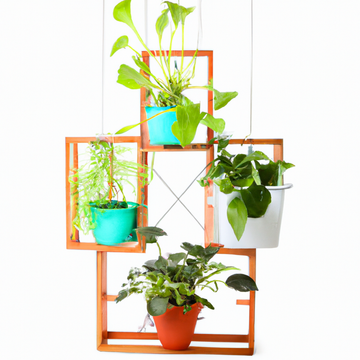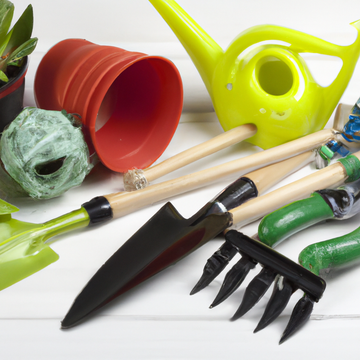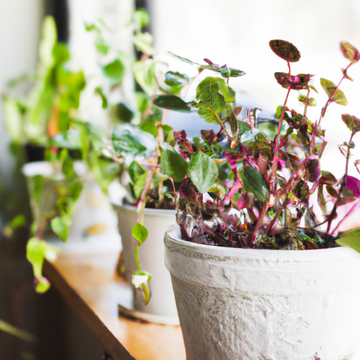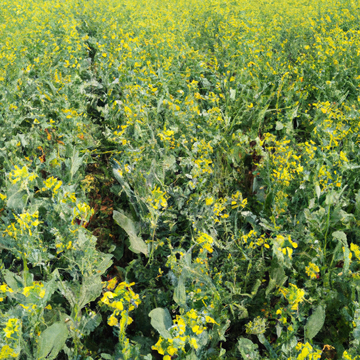The Science Behind How Clay Pots For Plants Promote Healthy Growth
by GOLDDUST- Rethink and Revive on Sep 09, 2023
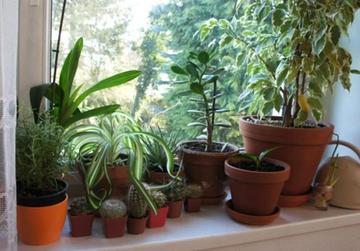
Welcome to the world of gardening, where nature and science intertwine to create beautiful and thriving plants. If you're a plant enthusiast just as we are, you know that choosing the right pot for your precious greenery is just as important as providing them with sunlight and water. That's why today we'll be diving into the fascinating realm of clay pots for plants – those humble vessels made from earth itself that hold the key to promoting healthy growth in our leafy friends.

In this article, we will explore what exactly clay is, how it benefits your plants' health, and unravel the scientific secrets behind its magic. We'll also touch upon different types of clay pots available in the market and learn how to use them effectively. So grab your trowel and let's dig deep into understanding why clay pots for plants are a gardener's best friend!
What is clay?

What is clay, you may wonder? Well, it's not just any ordinary dirt. Clay is a type of soil that forms from the decomposition of rocks over thousands of years. It consists mainly of tiny mineral particles, such as silica and alumina, which give it its distinct smooth and sticky texture.
The porous nature of clay allows excess water to evaporate gradually instead of pooling at the bottom of the pot or suffocating roots with stagnant moisture. This feature prevents issues like root rot and fungal diseases commonly associated with overwatering.
So now that we have a better understanding of what clay actually is, let's delve into how these humble pots can work wonders for your plants' health!
How do clay pots for plants promote healthy growth?
Let's understand how they help in plant growth?
Clay pots for plants have been used for centuries, and there's a good reason why they're still popular today. These humble vessels offer a range of benefits that can promote healthy growth in your plants.

- Clay pots provide insulation for plant roots. They help regulate temperature fluctuations by keeping the soil cool in hot weather and warm during colder months. This stability promotes optimal growth conditions and prevents stress on the plant.
- The tiny pores in the clay allow air to circulate around the roots, promoting oxygen flow and preventing suffocation or overwatering issues.
- Moreover, as water evaporates through the pores of the pot, it creates a microclimate around your plant that helps maintain consistent humidity levels. Some plants thrive in higher humidity environments, so this can be particularly beneficial for them.
- Clay pots are known to prevent salt buildup in soil due to their ability to absorb excess salts from fertilizers or tap water. This helps maintain balanced nutrient levels within the soil and prevents damage caused by salt accumulation.
- Clay pots have excellent breathability.
- The porous nature of clay allows air to circulate around the plant's roots and soil. This promotes root respiration and prevents the buildup of excess moisture that could lead to root rot.
- Clay has the ability to absorb and release water slowly. When you water your plants in a clay pot, the water is absorbed by the pot's walls and gradually released back into the soil. This helps maintain consistent moisture levels within the root zone without causing water logging or drying out.
- Clay pots for plants are known for their insulation properties. They can regulate temperature fluctuations by keeping plants cool during hot weather and insulating them from freezing temperatures in colder climates.
In conclusion,the science behind using clay pots for plants lies in their breathability, slow-watering capabilities,and mineral content which contribute to healthier plant growth overall
Different Types of Clay Pots
When it comes to choosing the right clay pot for your plants, there are various options available in the market. Each type of clay pot has its own unique characteristics that can benefit different types of plants.
Terracotta pots:

Made from natural clay and have a reddish-brown color. Terracotta pots are known for their porous nature, allowing air and moisture to pass through the walls of the pot.
This helps to regulate soil moisture levels and prevent overwatering, making them suitable for plants that prefer drier conditions.
Glazed ceramic pots:

Coated with a layer of waterproof glaze. These pots come in an array of vibrant colors and finishes, adding aesthetic appeal to any garden or indoor space.
The glaze also creates a barrier that prevents water loss through evaporation, keeping the soil moist for longer periods.
Fiberclay pots:

These pots are made by mixing clay with fiberglass or other organic materials, resulting in a durable yet lightweight material. Fiberclay pots offer excellent insulation properties and come in many stylish designs.
When selecting a clay pot for your plants consider factors such as porosity, weight preference,and aesthetic appeal.
How to Use a Clay Pot
Using a clay pot for your plants is not just about choosing the right type of pot, it's also important to know how to use it properly.
Here are some tips on how to use a clay pot effectively.
- Before using a new clay pot, make sure to soak it in water for at least 24 hours. This helps remove any impurities and prevents the pot from absorbing too much moisture from the soil.
- Choose the right size of clay pot for your plant. A general rule of thumb is that the diameter of the pot should be roughly equal to or slightly larger than the spread of the plant's leaves.
- When filling up the clay pot with soil, make sure to use high-quality well-draining soil mix.
- Clay pots tend to absorb more moisture than other types of pots, so using well-draining soil will prevent waterlogging and root rot.
- After planting your chosen plant in the clay pot, water it thoroughly until you see water draining out from the bottom drainage holes. This ensures that all parts of the root system receive adequate moisture.
Place your clay pots in an area where they can receive sufficient sunlight or shade depending on your plant's needs. Remember that different plants have different light requirements, so do some research beforehand.
By following these simple steps on how to use a clay pot correctly, you can ensure healthy growth and thriving plants in your garden!
Conclusion
It is evident that clay pots for plants play a crucial role in promoting healthy growth. The unique properties of clay, such as its porous nature and ability to regulate moisture levels, create an ideal environment for plant roots to thrive. By allowing airflow and preventing water stagnation, clay pots help prevent root rot and disease.
To use a clay pot effectively, remember to soak it before planting to prevent excessive water absorption. Additionally, placing saucers or trays underneath the pots can help catch excess water runoff.
Incorporating clay pots into your gardening routine can enhance the health and vitality of your plants. Their natural properties provide optimal growing conditions while adding aesthetic appeal to any indoor or outdoor space.
So why not give your green thumb an extra boost with these remarkable vessels? Invest in some quality clay pots today and watch your garden flourish like never before!

